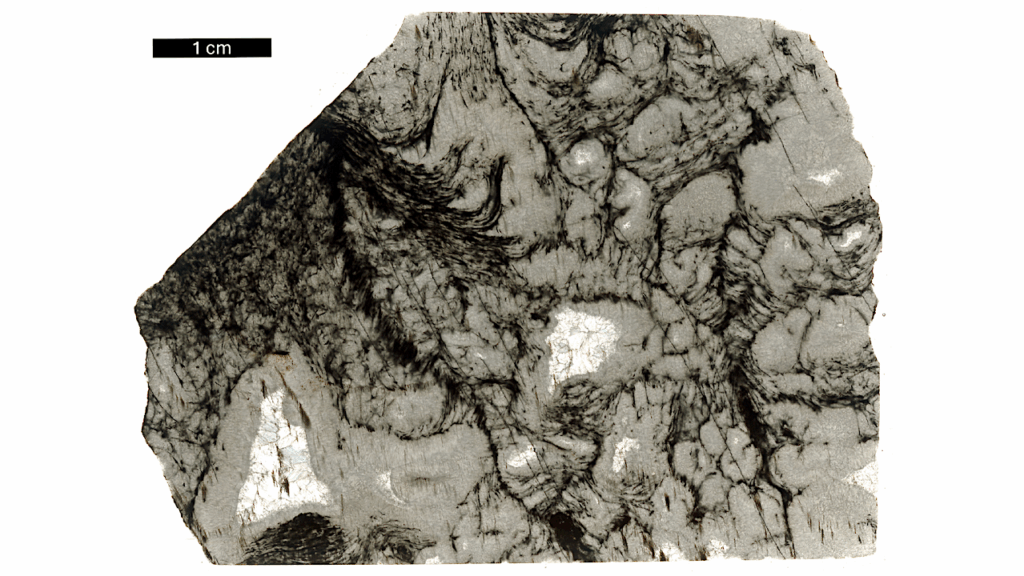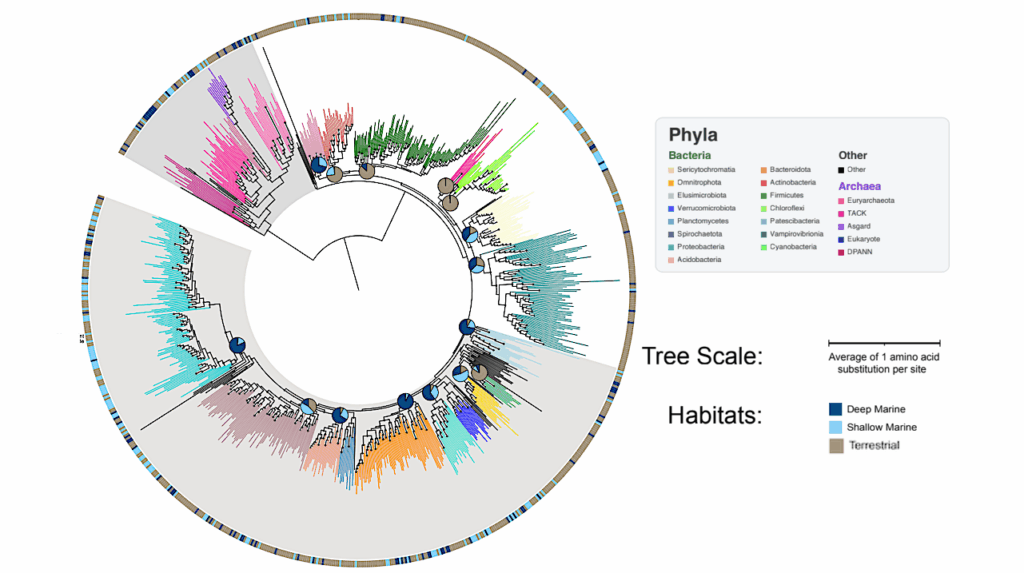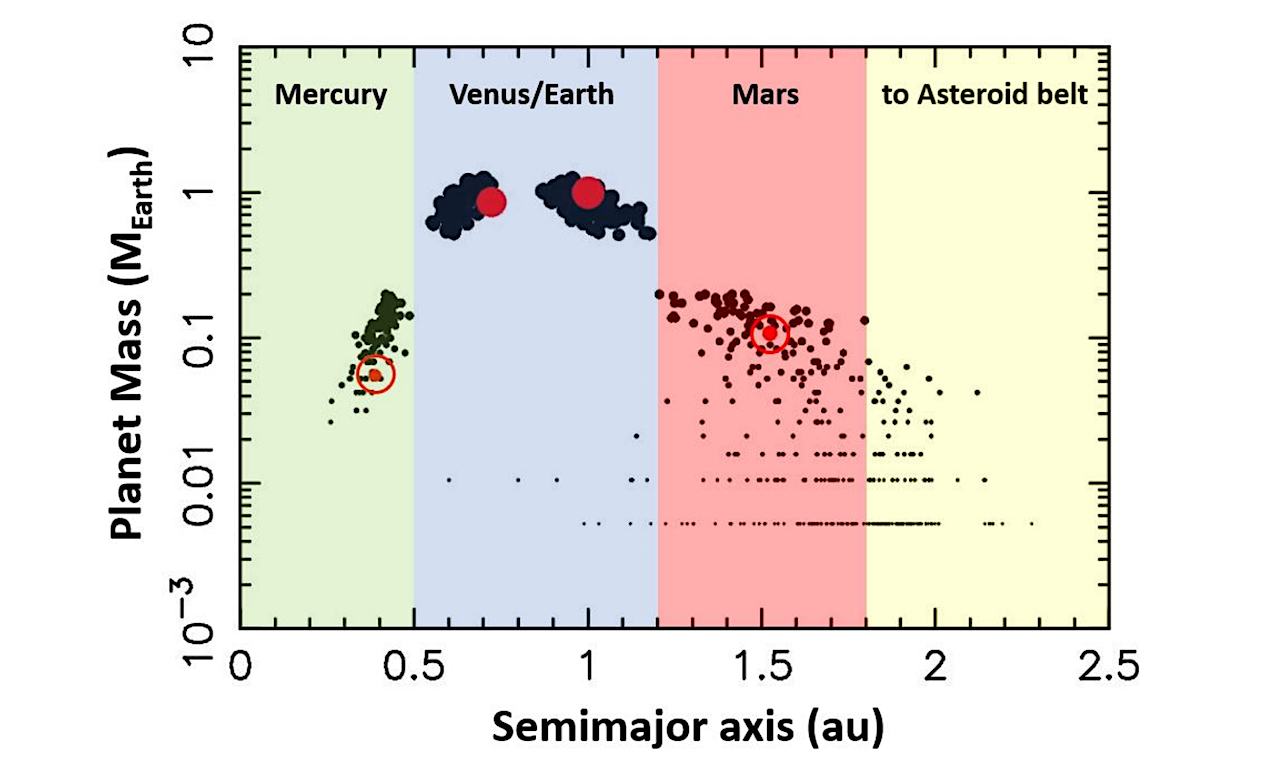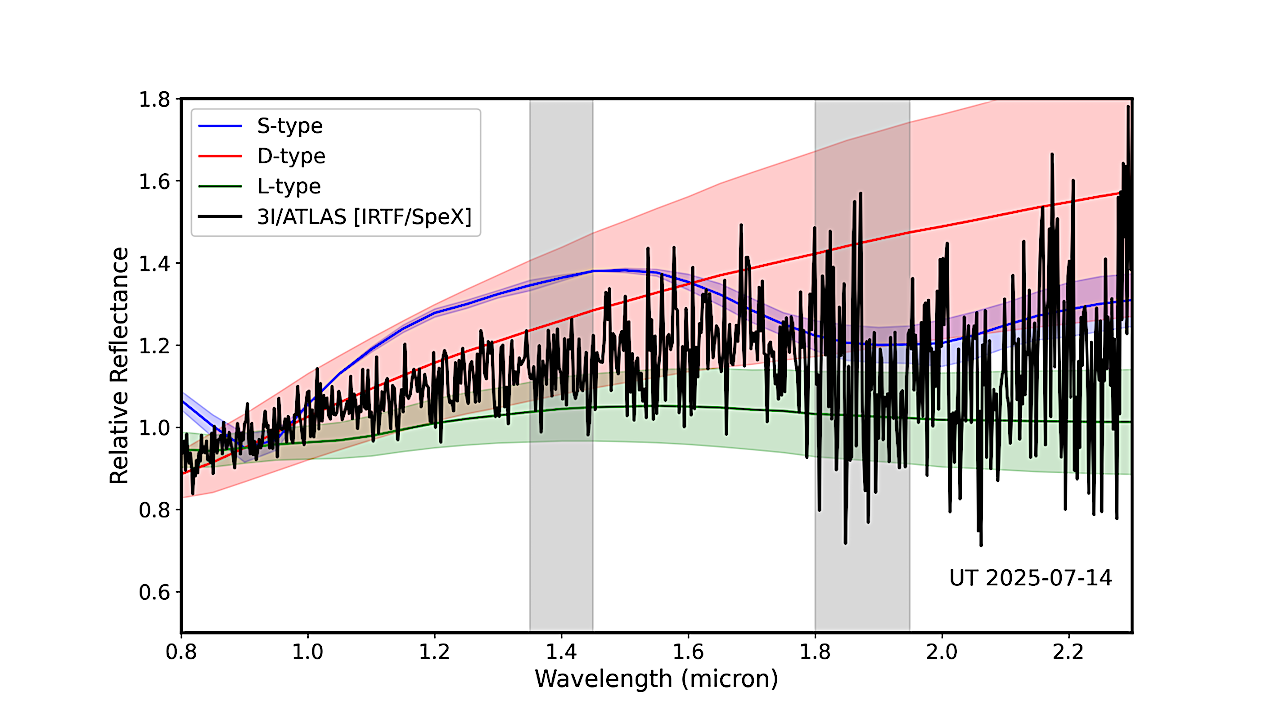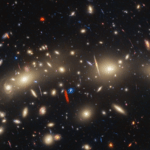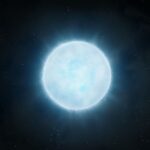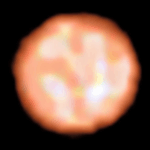Now Reading: The CARMENES Search For Exoplanets Around M Dwarfs. Revisiting The GJ 317, GJ 463, and GJ 3512 Systems And Two Newly Discovered Planets Orbiting GJ 9773 And GJ 508.2
-
01
The CARMENES Search For Exoplanets Around M Dwarfs. Revisiting The GJ 317, GJ 463, and GJ 3512 Systems And Two Newly Discovered Planets Orbiting GJ 9773 And GJ 508.2
The CARMENES Search For Exoplanets Around M Dwarfs. Revisiting The GJ 317, GJ 463, and GJ 3512 Systems And Two Newly Discovered Planets Orbiting GJ 9773 And GJ 508.2
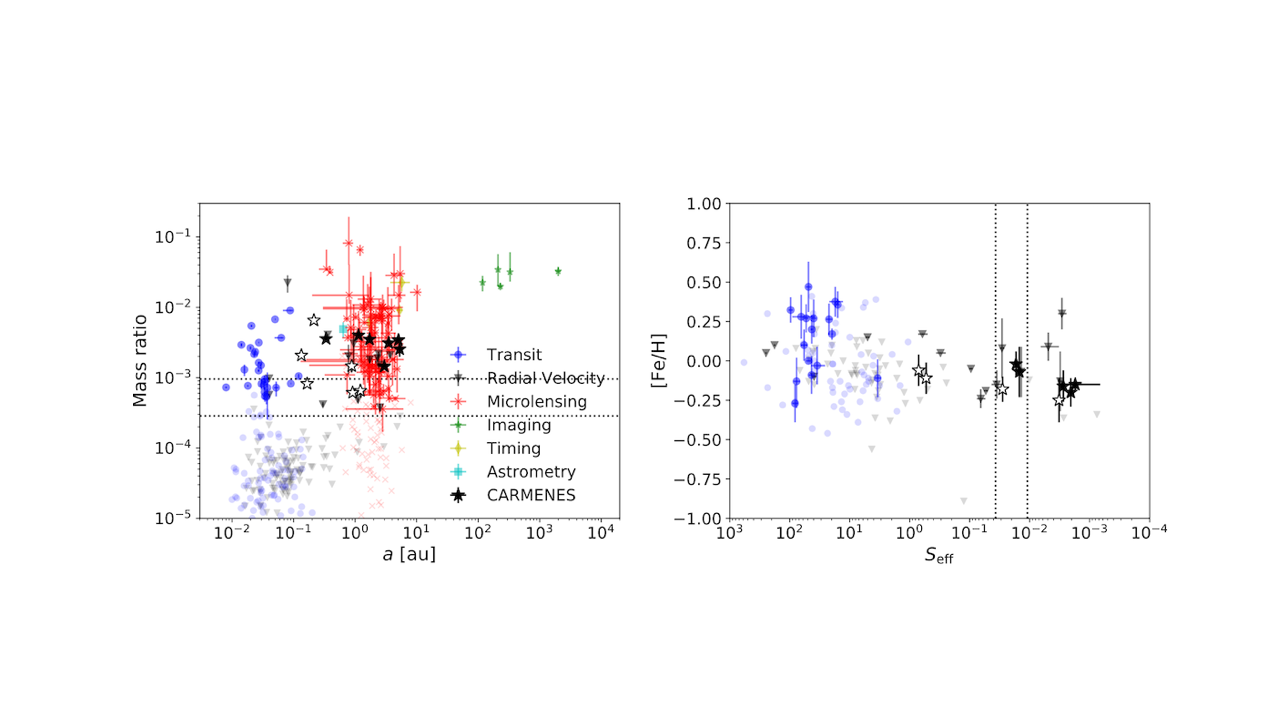
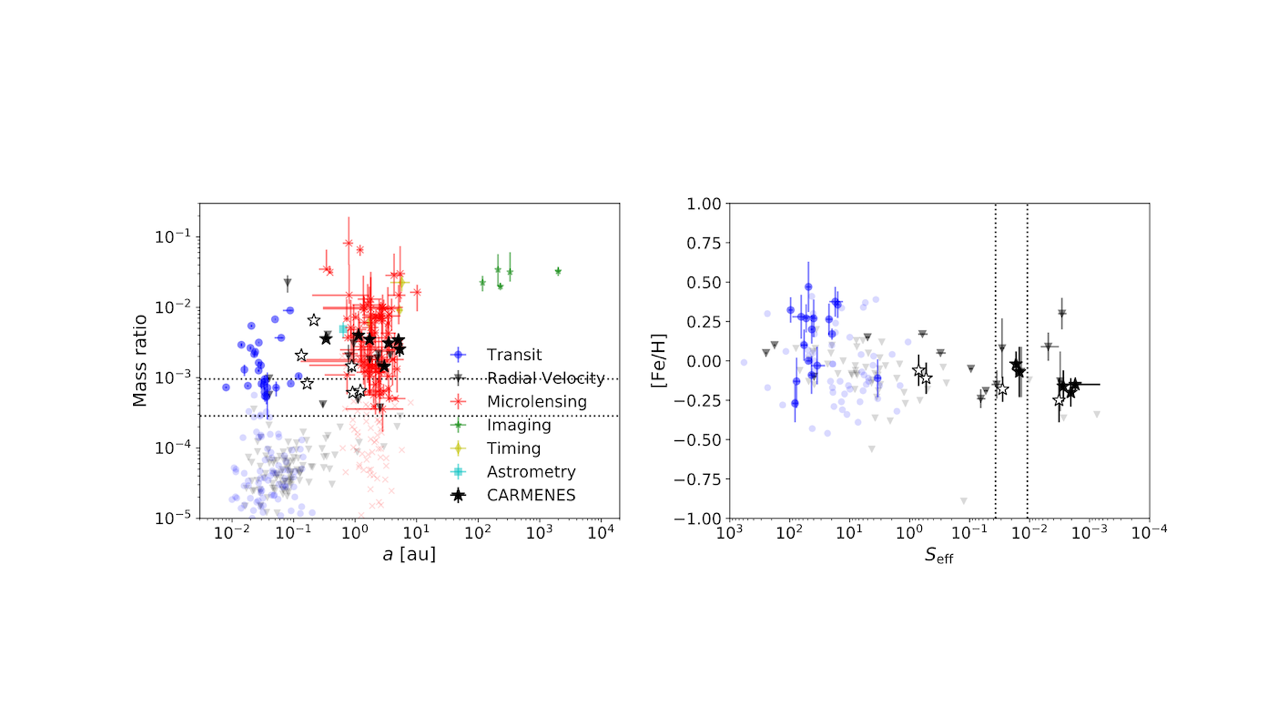
Left: Planet-to-star mass ratio as a function of the planet semi-major axis for all planets orbiting M-dwarf stars. Darker coloured symbols correspond to planetary masses above 0.2 MJup. Horizontal dotted lines indicate the Jupiter-to-Sun and Saturn-to-Sun mass ratios for reference. Right: Host star metallicity as a function of the insolation at the exoplanet semi-major axis. For multi-planetary systems, only the innermost planet is depicted. Vertical dotted lines indicate current insolation values of Jupiter and Saturn for reference. In both panels, different detection techniques are shown as labelled. Star symbols depict planets in the CARMENES sample (filled symbols, this work, and empty symbols, Trifonov et al. 2018, 2020a; Quirrenbach et al. 2022). — astro-ph.EP
Surveys for exoplanets indicate that the occurrence rate of gas giant planets orbiting late-type stars in orbits with periods shorter than 1000 days is lower than in the case of Sun-like stars.
This is in agreement with planet formation models based on the core or pebble accretion paradigm. The CARMENES exoplanet survey has been conducting radial-velocity observations of several targets that show long-period trends or modulations that are consistent with the presence of giant planets at large orbital separations.
We present an analysis of five such systems that were monitored with the CARMENES spectrograph, as well as with the IRD spectrograph. In addition, we used archival data to improve the orbital parameters of the planetary systems. We improve the parameters of three previously known planets orbiting the M dwarfs GJ 317, GJ 463, and GJ 3512.
We also determine the orbital parameters and minimum mass of the planet GJ 3512 c, for which only lower limits had been given previously. Furthermore, we present the discovery of two new giant planets orbiting the stars GJ 9733 and GJ 508.2, although for the second one only lower limits to the orbital properties can be determined.
The new planet discoveries add to the short list of known giant planets orbiting M-dwarf stars with subsolar metallicity at long orbital periods above 2000 days. These results reveal that giant planets appear to form more frequently in wide orbits than in close-in orbits around low-mass and lower metallicity stars.
J. C. Morales, I. Ribas, S. Reffert, M. Perger, S. Dreizler, G. Anglada-Escudé, V. J. S. Béjar, E. Herrero, J. Kemmer, M. Kuzuhara, M. Lafarga, J. H. Livingston, F. Murgas, B. B. Ogunwale, L. Tal-Or, T. Trifonov, S. Vanaverbeke, P. J. Amado, A. Quirrenbach, A. Reiners, J. A. Caballero, J. F. Agüí Fernández, J. Banegas, P. Chaturvedi, S. Dufoer, A. P. Hatzes, Th. Henning, C. Rodríguez-López, A. Schweitzer, E. Solano, M. Zechmeister, H. Harakawa, T. Kotani, M. Omiya, B. Sato, M. Tamura
Comments: 32 pages (including appendix with radial velocity time series), 16 figures, 14 tables. Accepted for publication in A&A
Subjects: Earth and Planetary Astrophysics (astro-ph.EP)
Cite as: arXiv:2507.15516 [astro-ph.EP] (or arXiv:2507.15516v1 [astro-ph.EP] for this version)
https://doi.org/10.48550/arXiv.2507.15516
Focus to learn more
Submission history
From: Juan Carlos Morales
[v1] Mon, 21 Jul 2025 11:34:40 UTC (9,156 KB)
https://arxiv.org/abs/2507.15516
Astrobiology,
Stay Informed With the Latest & Most Important News
Previous Post
Next Post
-
 012024 in Review: Highlights from NASA in Silicon Valley
012024 in Review: Highlights from NASA in Silicon Valley -
 02Panasonic Leica Summilux DG 15mm f/1.7 ASPH review
02Panasonic Leica Summilux DG 15mm f/1.7 ASPH review -
 03How New NASA, India Earth Satellite NISAR Will See Earth
03How New NASA, India Earth Satellite NISAR Will See Earth -
 04And Thus Begins A New Year For Life On Earth
04And Thus Begins A New Year For Life On Earth -
 05Astronomy Activation Ambassadors: A New Era
05Astronomy Activation Ambassadors: A New Era -
06SpaceX launch surge helps set new global launch record in 2024
-
 07Space Force plans new ‘Futures Command’ amid pressure to speed up modernization
07Space Force plans new ‘Futures Command’ amid pressure to speed up modernization













